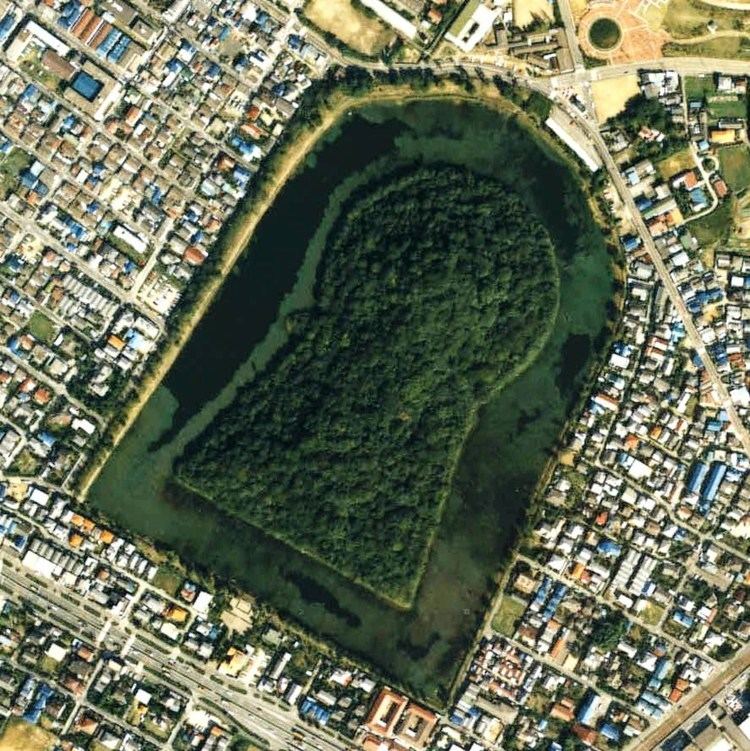Predecessor Nintoku Died 405 (aged 69) | Successor Hanzei Name Emperor Richu | |
 | ||
Reign 400 – 405 (traditional) Burial Mozu no Mimihara no naka no misasagi (Osaka) | ||
Emperor Richū (履中天皇, Richū-tennō) was the 17th emperor of Japan, according to the traditional order of succession.
Contents

No firm dates can be assigned to this emperor's life or reign, but he is conventionally considered to have reigned from 400 to 405.
Legendary narrative
Richū is regarded by historians as a "legendary emperor" of the 5th century. The reign of Emperor Kinmei (c. 509 – 571 AD), the 29th emperor, is the first for which contemporary historiography is able to assign verifiable dates; however, the conventionally accepted names and dates of the early emperors were not to be confirmed as "traditional" until the reign of Emperor Kanmu (737–806), the 50th sovereign of the Yamato dynasty.
According to Nihonshoki and Kojiki, Richū was the eldest son of Emperor Nintoku and Iwanohime.
Richū's contemporary title would not have been tennō, as most historians believe this title was not introduced until the reigns of Emperor Tenmu and Empress Jitō. Rather, it was presumably Sumeramikoto or Amenoshita Shiroshimesu Ōkimi (治天下大王), meaning "the great king who rules all under heaven." Alternatively, Richū might have been referred to as (ヤマト大王/大君) or the "Great King of Yamato."
Some scholars identify him with King San in the Book of Song. King San sent messengers to the Liu Song dynasty at least twice in 421 and 425.
Richū escaped from Naniwa Place to Isonokami Shrine because of arson. Richū succumbed to disease in his sixth year of reign. His tomb is in Kawachi province, in the middle of present-day Osaka Prefecture. He was succeeded by his younger brother Emperor Hanzei. None of his sons succeeded to the throne, although two grandsons would eventually ascend as Emperor Kenzō and as Emperor Ninken.
The site of Richū's grave is not known. This emperor is traditionally venerated at a memorial Shinto shrine (misasagi) in Sakai, Osaka. The Imperial Household Agency designates this location as Richū's mausoleum. It is formally named Mozu no mimihara no minami no misasagi. It is also identified as the Kami Ishizu Misanzai kofun.
Consorts and children
Empress (first): Kurohime (黒媛), daughter of Katsuragi no Ashita no Sukune (葛城葦田宿禰)
Empress( second): Kusaka no Hatabi no Himemiko (草香幡梭皇女), daughter of Emperor Ōjin
Futohime no Iratsume (太姫郎姫), daughter of Funashiwake (鯽魚磯別王)
Takatsuru no Iratsume (高鶴郎姫), sisters of Futohime
